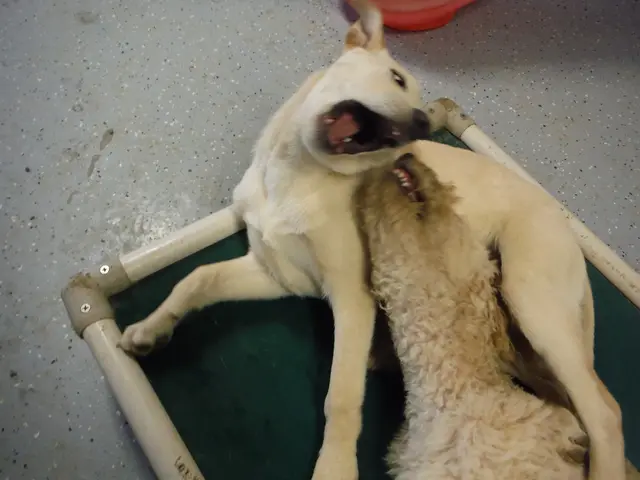Business stock levels and employment patterns indicate a mixture of indicators according to Bank of America's recent report on small enterprises.
Small Businesses Show Cautious Optimism in Mid-2025 Economic Recovery
A recent report by the Bank of America Institute, titled "Small Business Checkpoint," reveals an interesting mix of optimism and caution among small businesses in the United States.
While small business profitability is on the rise in June 2025, the report indicates a slowdown in hiring activity and a measured approach towards expanding business travel plans. This cautious stance may be a response to the nuanced economic recovery, where consumer spending growth varies across different segments.
Hiring Activity Slows Down
Hiring activity among small businesses is showing signs of slowdown despite increased profitability. The report suggests that small businesses are being cautious about operational expansions such as hiring, which could translate to conservative inventory stocking decisions as well.
Inventory Trends
The report does not provide exhaustive detail on the inventory trends for the manufacturing and services sectors. However, the general tone suggests a careful, watchful approach towards scaling up. The National Federation of Independent Business (NFIB) data cited in the report shows that a net negative 4% of business owners plan to invest in inventory in the coming months.
Regional Differences
Regional variations exist in the payroll growth of small businesses. Cities in the South, particularly San Antonio, Houston, and Austin, are recording the highest payroll growth. On the other hand, cities in the Northeast and places like Phoenix and Boston are experiencing negative year-over-year payroll growth.
Payment Behaviors
The report provides a granular look at spending behaviors, categorizing transactions by method such as ACH, debit card, wire, and check. Wire transfers saw the strongest year-over-year growth at 11.4%, while credit card and check payments were negative for the month.
Interestingly, retail payments to shipping and transportation firms do not reflect a notable increase in inventories, which could suggest that any recent surge in consumer goods imports has likely been offset by consumers buying ahead.
Labor Market Challenges
The increase in hiring activity could indicate greater difficulty in filling roles rather than increased hiring success. This negative growth may be due to labor supply constraints from changing economic and immigration policies.
Implications
Given the report date and thematic context, these trends reflect a measured approach by small businesses amid a complex economic recovery with uneven spending growth across different consumer segments. The report serves as a valuable resource for understanding the current state of small businesses and provides insights into future trends.
The conservative approach towards hiring, as indicated by the report, may lead to restricted expansion in small businesses, potentially impacting the overall labor market.
Given the slowdown in hiring activity and focus on inventory management, it seems small businesses are adopting a prudent financial strategy indicative of the choppy economic recovery.








